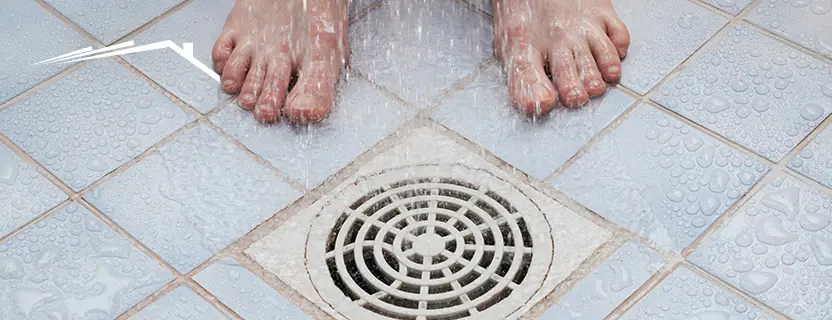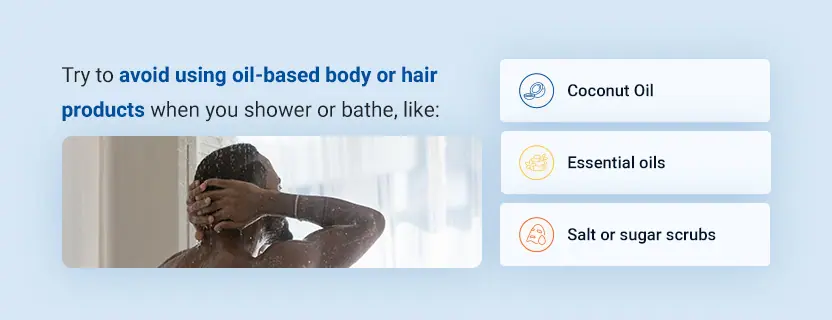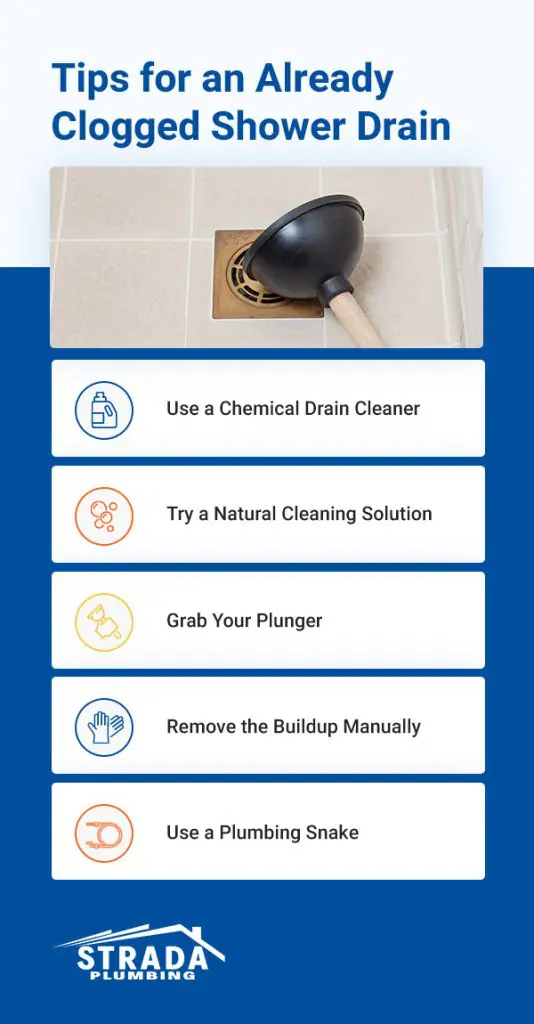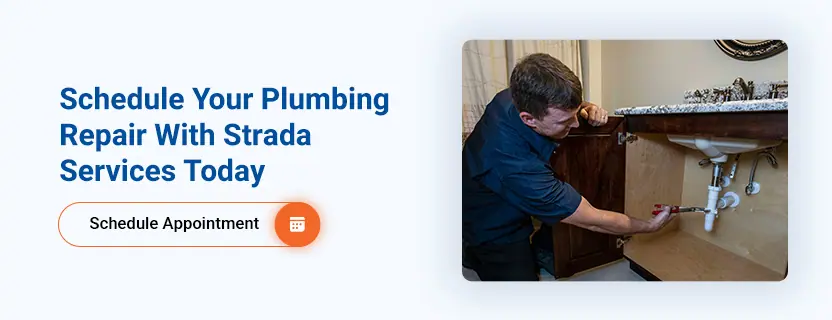
Hair is one of the most common culprits of a clogged shower drain. The lightweight strands easily wash down the drain and into your pipes. Accumulated hairs in the drain can clump together and cause blockages, turning a simple, relaxing bath or shower into a nuisance.
Thankfully, you don’t have to put up with a backed-up shower drain. Whether you’re looking for ways to prevent hair buildup or resolve a stubborn clog, you’ve come to the right place! Discover how to manage drain clogs with these foolproof tips.
Knowing how to prevent shower drain clogs is essential for a few reasons. When hair goes down the drain, it mixes with dirt, oil, soap scum, shampoo, shaving cream residue and other gunk. Together, these substances can form a thick, sticky glob, making it hard for water to pass through.
Over time, this buildup can slow down drainage and eventually cause backups, damaging your home’s plumbing system. In that case, you’ll probably have to call a professional to correct the issue.
A clogged shower drain isn’t merely inconvenient — it can also be unsafe. As the mass in the drain continues to catch water, it can attract bacteria and microorganisms, some of which pose risks to your health.
Hair and other debris may have clogged your drain if:
But never fear! These issues are easily avoidable. Many simple measures can keep hair and other grime from clogging up your drain, which we’ll explore below.
If you’re wondering how to prevent hair clogs in your shower, we’ve compiled this list of handy tips and tricks.

Take a few minutes to brush your hair before hopping in the shower. Doing so removes stray hairs that would otherwise fall in the drain. You can drop these loose pieces into the trash instead.
If a few strands come loose as you wash your hair, set them on the edge of the tub and discard them later. This regular practice won’t entirely prevent hair from invading your drain, but it can significantly reduce it. If you aren’t washing your hair, you can wear a shower cap to keep those loose strands in check.
With a mesh hair trap, you don’t have to be nearly as vigilant about monitoring the strands that fall into your drain. A hair trap is a small cover that fits over or inside your drain. Water can pass through easily. However, hair, dirt, soap residue and other grime will land on the mesh instead of going through.
These devices are also simple to clean out. Pull out the hair and empty it into the garbage. Don’t worry — you can always slip on some disposable gloves if touching the hair doesn’t sound too appealing.
While a mesh trap is one of the most effective ways to prevent clogs, it won’t entirely prevent hair buildup. Use it in conjunction with other practices like regular drain cleaning and flushing.
Simultaneously flushing out all your drains can help keep clogs at bay. Flushing sends a surge of water, helping wash away hair and other pesky substances. Recruit a few people to help — this process requires some extra hands. Here’s how to flush all your drains at once:
Following these steps will send a large cascade of water through your pipes. It can break up hair, dirt and other materials lodged in your drains.
Oil and grease are notorious for clogging pipes. When water carries these substances into the drain, the oil can settle at the bottom and solidify. It also mixes with hair, dirt and hygiene products, potentially wreaking havoc on your plumbing system.

Try to avoid using oil-based body or hair products when you shower or bathe, like:
Check the product’s ingredients before using it in the shower. If it contains oil, consider using it outside the shower only. Allow ample time for your skin to absorb the oils before bathing. Additionally, wipe off any excess product with a paper towel before getting in.
Remember that this won’t completely prevent oil from entering your plumbing system. Your body naturally produces oils that wash down the drain. However, cutting down your use of oily bath and hair products is a step in the right direction.
Many homeowners use their tubs for other activities besides bathing and showering, like washing your pets, pouring out a bucket of dirty water or cleaning your bathroom mats.
Using your tub for these purposes might be convenient, but it lets pet hair and dander, dirt, oil and other materials enter and clog up your drain. The chemicals you use to clean your floor or car can spell trouble for your plumbing. There’s likely lots of hair and other substances lurking in the water.
Consider finding alternative places to perform these tasks. At the very least, use a mesh shower drain cover to trap some debris.
After taking a shower or bath, allow the hot water to continue running for a few extra minutes. Doing so can help flush out lingering soap scum, oil and other residues, rinsing them down the drain before they settle and solidify.
A consistent cleaning schedule is crucial for preventing a clogged drain. Washing your shower drain at least once a week can help keep it free of hair and gunk. After rinsing, pour some hot water down the drain to flush it. A thorough rinse is especially vital when your drain has more grime than usual.
You can also pour a cup of baking soda into the drain, followed by a cup of white vinegar. Let this solution sit for half an hour, then rinse it with boiling water. This mixture can eliminate any clogs in their early development stages. It can also help remove any stale odors coming from your drain. Try to do this once a month.
If your drain is experiencing slight clogging, some DIY methods could rectify the issue. Here are some options that might help unclog your drain and get your water flow back up to par. Remember, these tips are only for small clogs. Severe clogging and pipe backups require professional plumbing repair.

You can find drain cleaners at most hardware and home improvement stores. While many traditional drain cleaners have bleach that can damage your plumbing system, plenty of bleach-free, noncorrosive alternatives can break down clogs without harming your pipes.
Carefully read the instructions. Each product will specify different amounts to pour down the drain and how long to wait before flushing it out. Wearing goggles and gloves when working with these cleaning products is also a good idea.
If you’d rather not use chemicals to clean your drain, you can try these natural cleaning methods to loosen minor clogs.
After trying one or both of these methods, shine a flashlight down the drain to see if it removed the clog.
At some point, you may have used a plunger to unclog your toilet. Homeowners often forget they can also use this tool for their shower drains. If there is no standing water in your shower, fill your bathtub with a small amount of water to cover the plunger’s lip.
The secret is to get a good seal so the plunger can do its job correctly. If you have trouble with this, try spreading a thin layer of petroleum jelly along the plunger’s lip. Place the plunger over the drain, then push it forcefully several times until the water begins flowing smoothly.
Understandably, the thought of reaching into your drain and removing clogged debris by hand might make your skin crawl. However, this can be a quick and feasible option for minor and surface-level clogs. Thick clumps of hair, soap, dirt, oil and other materials may not totally wash away with the above methods. In that case, you may need to remove them manually.
First, put on a pair of rubber gloves and remove the drain cover. Some covers will pull up seamlessly, but you may need to twist it or grab a screwdriver if yours is more stubborn. Having someone stand next to you and hold a flashlight over the drain may help. That way, you can easily identify the clog and pull it out if it’s close enough to the surface. If you don’t immediately see it, feel around the drain for any built-up material and try pulling out any clogs you detect.
You can also try using a metal coat hanger, but be extremely careful. The clog may be too deep for the hanger to reach. If something is blocking the pipe, a hanger could push it further into the system, creating a larger obstacle.
Jiggle the hanger to fish out hair, shampoo residue and any other gunk present. Pull out the hanger, wipe off the buildup with a paper towel and dispose of it in the trash. Use your best judgment here. If the clog feels too deep to reach with a hanger, immediately stop fishing around and call a plumber to address the clog.
A plumbing snake is a long, slender cable resembling a hose. You can try it when your clog is too large for a plunger. It has a handle on one end and a small spring on the other. Its design lets it uncoil down the drain, eventually reaching the materials causing the blockage. The coiled wire rotates as it travels through the pipe.
Remove the drain cover, then gently lower and rotate the snake into the drain — don’t force it. Every plumbing snake works a bit differently. The corkscrew may drill through the material or grab onto it, then drag it back to the surface where you can dispose of it. Alternatively, the drain snake may break up the material so it flows through the pipes.
Depending on the size of the clog, you may need to run the snake a few times to collect all the buildup. After using the snake, rinse the drain with boiling water and see if it flows.
Your shower drain will probably need professional plumbing services if you’ve exhausted every possible avenue or the clogging is more severe than you thought.

The above tips are an excellent start if you’re wondering how to prevent your shower drain from clogging. However, more severe clogs and plumbing issues call for professional intervention.
Luckily, Strada Services has a team of experienced plumbers who can diagnose and remedy the issue. We offer various plumbing services throughout Central Florida, including repairs, installations, repiping and drain cleaning. There are numerous benefits to choosing us for your plumbing repair needs, including:
Whether you need a simple drain cleaning or a total pipe replacement, the specialists at Strada Services are ready to assist you. Learn more about our plumbing services or schedule an appointment today!